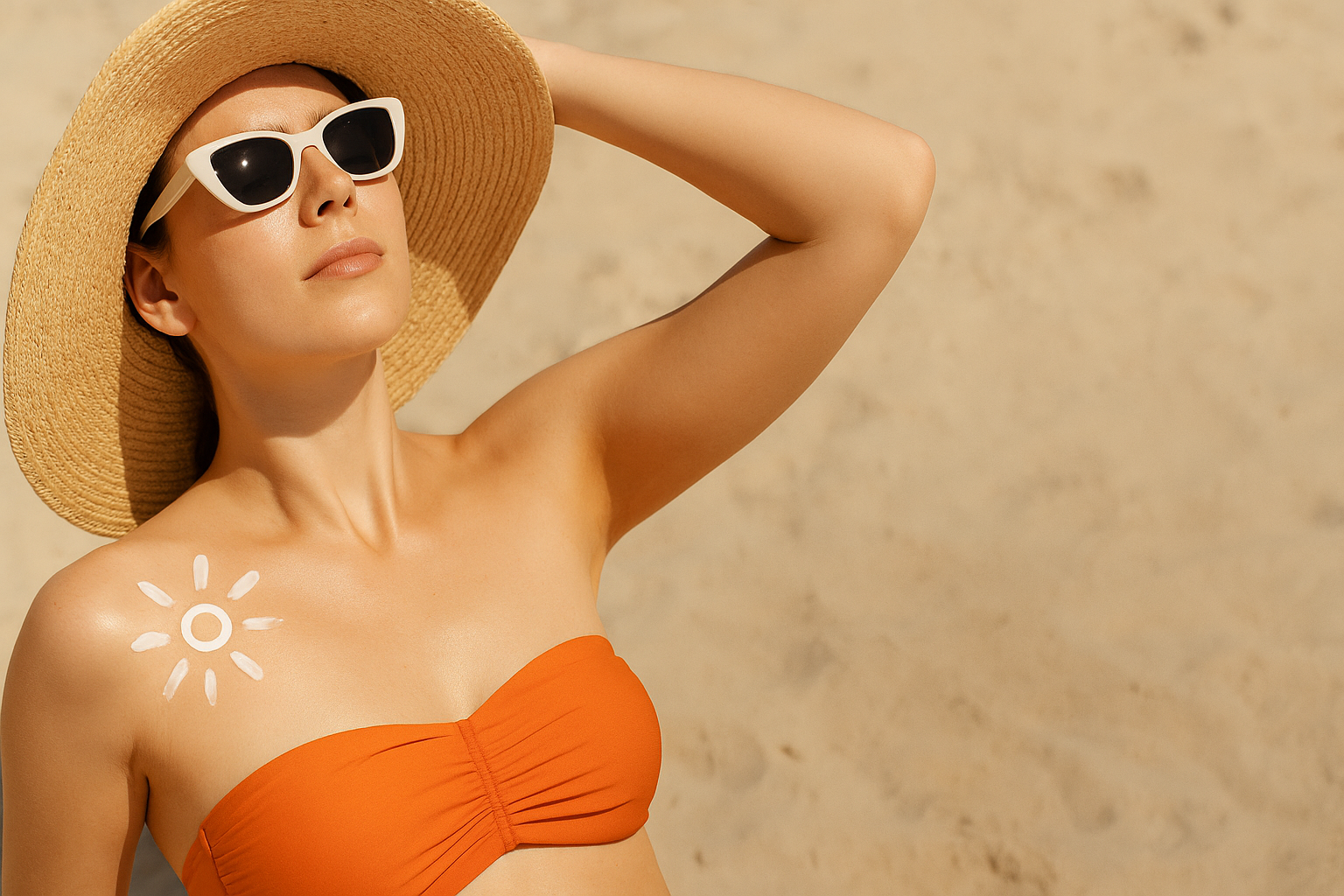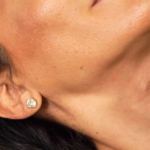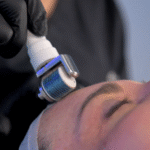The intense, almost exaggerated tan of the 1980s is making a comeback—a throwback to those long, unfiltered afternoons at the beach. But today, unlike back then, it’s no longer a status symbol tied to luxury or exclusive holidays. It has become something different, more intimate. An expression of newfound freedom, especially among younger generations. After the pandemic and months spent indoors in front of screens, Gen Z seems to be reacting through their bodies and skin. Sun exposure, tanning, living outdoors—it’s almost a rebellious act against forced confinement. A way of saying: “I’m here, I’m outside, I’m alive.” Tanning, therefore, is not just aesthetic: it’s both memory and desire, a silent but powerful declaration of a return to life.
YOUNG PEOPLE FORGET TO APPLY SUNSCREEN
According to a 2024 survey by the Orlando Health Cancer Institute, one in seven people under 35 believes that sunscreen products are harmful. Another study by the American Academy of Dermatology Association found that half of the young participants reported getting sunburned last year, and 64% often forget to apply sunscreen. For these young individuals, tanning represents resilience in the face of climate change. It’s a way to feel stronger and a willingness to adapt no matter the context.
THE DAMAGE CAUSED BY UV RAYS
The scientific reality, however, is different. “UV rays remain one of the main causes of skin cancer and photoaging,” explains Dr. Eleana Ferrari. “Sun damage is irreversible, accumulates over time, and becomes more aggressive due to climate change. Dermatological science emphasizes that ‘the skin never forgets.’ Every sun exposure, every burn, every day spent without protection leaves a mark—even if invisible. The damage accumulates silently and can show up years later in the form of spots, deep wrinkles, loss of firmness, or—in more severe cases—skin cancers. This isn’t alarmism, but biological reality.”
UVA AND UVB RAYS
Not all sun rays affect the skin in the same way. Some, like UVA rays, penetrate deep into the skin, working silently: they contribute to premature aging and can even alter cellular DNA. Others, like UVB rays, stay more on the surface but cause sunburns and, over time, can increase the risk of melanoma. The issue is that this damage isn’t immediately visible. You don’t feel it right away, but your skin records it. That’s why sun protection shouldn’t be used only during vacations or on sunny days—but also when the sky is overcast, because UV rays still get through.
NOT ALL SKIN TYPES ARE THE SAME
Another myth to debunk is the idea that tanning is “democratic.” The belief that everyone can achieve the same golden tone is misleading and risky. “Fair skin types, like type I and II, don’t produce enough melanin to tan significantly,” continues Dr. Ferrari. “For these individuals, prolonged sun exposure just means skin damage. Even those with more resistant skin aren’t truly safe. When the UV index is high, and the sun is burning even in the morning, the skin is under stress. Free radicals increase—those molecules that speed up aging and damage cells. At that point, even the most sun-trained skin struggles to protect itself. Protection is necessary, but not sufficient. It’s advisable to adopt a ‘scattering’ routine—alternating 30 minutes of direct sun with 30 minutes in the shade to give skin time to breathe and activate its self-defense mechanisms.”
CHEMICAL OR PHYSICAL FILTERS?
Not all sunscreens are created equal. There are two main categories: chemical filters and physical (or mineral) filters.
- Chemical filters (such as avobenzone, octocrylene, homosalate) work by absorbing UV rays and converting them into heat. They need to be applied at least 30 minutes before sun exposure. They’re often preferred for their lightweight, invisible textures—ideal under makeup or for those who dislike white residue. However, they may cause irritation in sensitive skin and degrade over time (which is why reapplication every two hours is important).
- Physical filters, on the other hand, are made of minerals (like zinc oxide and titanium dioxide) that physically reflect sunlight. They are generally more stable, provide immediate photoprotection after application, and are better tolerated by sensitive skin or children. The downside? They can leave a slight white cast—although new “nano” formulations have significantly improved the sensory feel. They are especially suitable for oily skin.
- Choosing the right sunscreen depends on many factors: skin type, daily habits, and preferred texture. Whatever the formula, it’s essential that it offers broad spectrum protection—shielding from both UVA and UVB rays.
SUNSPOTS: WHAT THEY ARE, WHY THEY APPEAR, AND HOW TO PREVENT THEM
Skin discolorations—commonly known as sunspots—are one of the most frequent side effects of sun exposure. They often appear on the face, décolleté, and hands, marked by localized increases in melanin. Causes may include hormonal changes (pregnancy, birth control use), medications (some antibiotics and anti-inflammatories are photosensitizing), or simply age.
Prevention is key:
- Use SPF 50+ daily, even in the city;
- Opt for sunscreens specifically designed to prevent dark spots. These contain ingredients like antioxidants, niacinamide, tranexamic acid, or vitamin C to help regulate melanin production;
- Avoid direct sunlight when it’s strongest, between 11 a.m. and 4 p.m., and reapply sunscreen every two hours—even if you’ve already applied it in the morning;
- Those with existing hyperpigmentation can choose total screen-effect sunscreens, combined with nighttime depigmenting treatments. But consistency remains the most effective tool.
REJUVE DERMOCOSMETIC TREATMENTS
Rejuve is a line of professional cosmeceutical products developed to support and enhance aesthetic medicine treatments, both in-office and at home. Formulated with high-concentration actives and advanced technologies, Rejuve products aim to improve skin quality, stimulate regenerative processes, and deliver visible, long-lasting results.
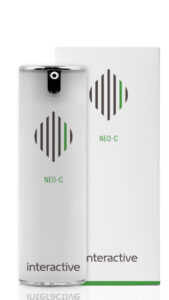
INTERACTIVE NEO-C
A brightening and antioxidant serum with a high concentration of stabilized Vitamin C (30%), designed to combat dullness, discoloration, and early signs of aging. The formula is enhanced by: Ferulic Acid, which amplifies photoprotective effects; Vitamin E, offering synergistic action against oxidative stress; Biomimetic Peptides, which stimulate collagen synthesis. Recommended for evening use.
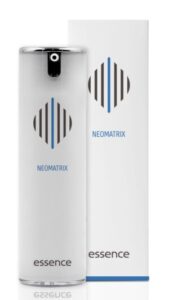
ESSENCE NEOMATRIX
An intensive restructuring serum designed for stressed, thin, or mature skin. Its advanced formula acts as a “dermal matrix activator” thanks to a targeted blend of regenerative actives. Contains: Hyaluronic Acid for deep, progressive hydration; Bakuchiol, the natural alternative to retinol; Niacinamide, a form of vitamin B3 that soothes, evens out, and strengthens the skin barrier. Recommended for use during the day before applying sunscreen.
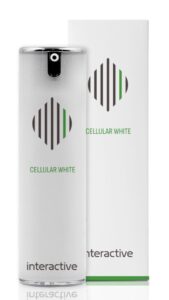
INTERACTIVE CELLULAR WHITE
An intensive brightening treatment, ideal for addressing discoloration, dark spots, and dullness. Its advanced formula combines: Glutathione, which helps reduce melanin synthesis for a more even complexion; Arbutin for a lightening effect; and Plant-based Glycerin for deep hydration. Recommended for evening use, after the Neo-C serum.
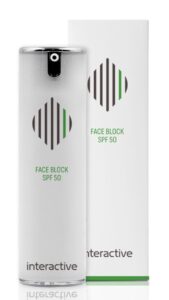
INTERACTIVE FACE BLOCK SPF 50
Provides broad-spectrum protection against UVA and UVB rays with a combination of photostable filters and antioxidant technologies. Key ingredients include: Perfluorinated compounds that promote oxygen penetration into skin tissues, enhancing cellular regeneration and improving radiance. The formula is completed with Shea Butter, rich in vitamins and fatty acids, to deeply nourish the skin.
WANT TO LEARN MORE?
Follow us on social media to see treatment results and stay updated on all the latest in Aesthetic Medicine. Want to book an appointment? Fill out the form now.

